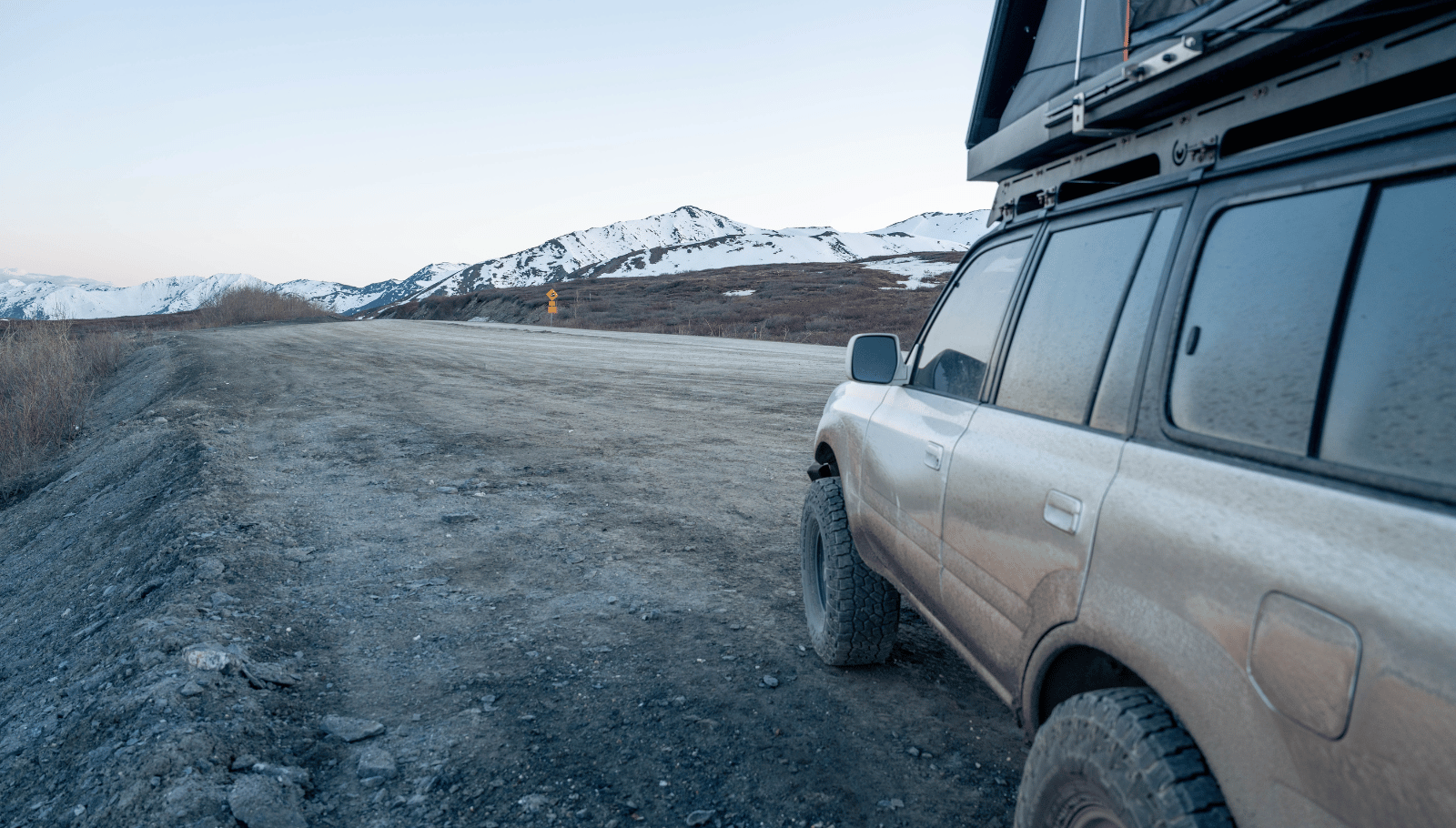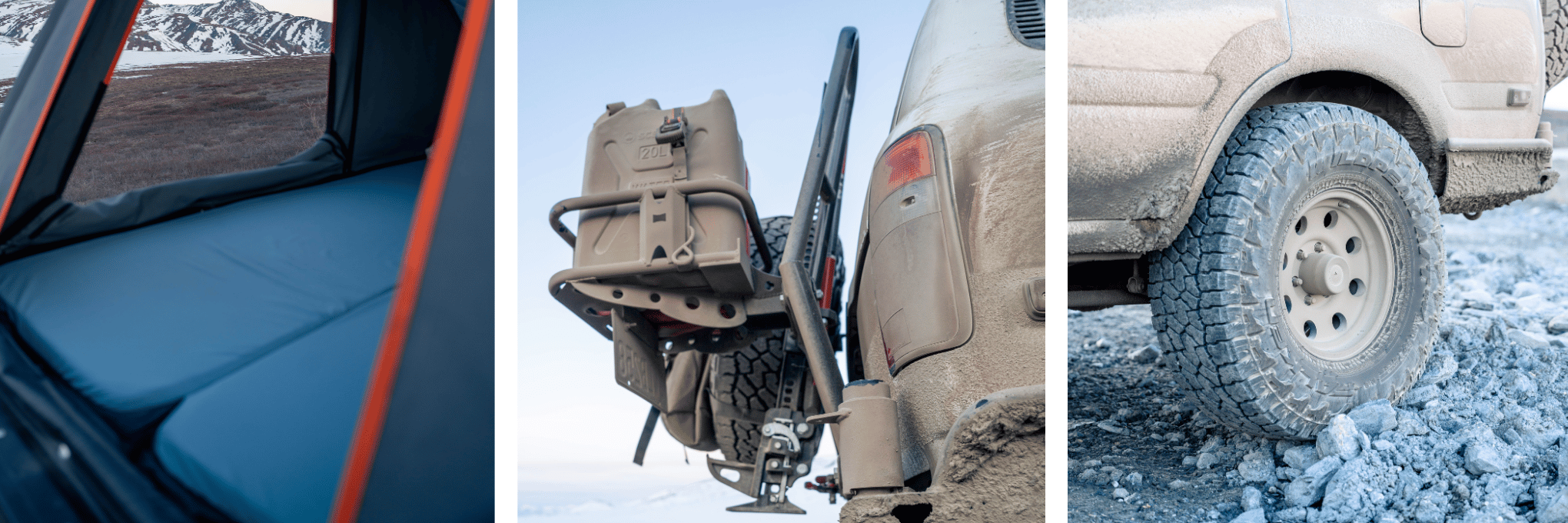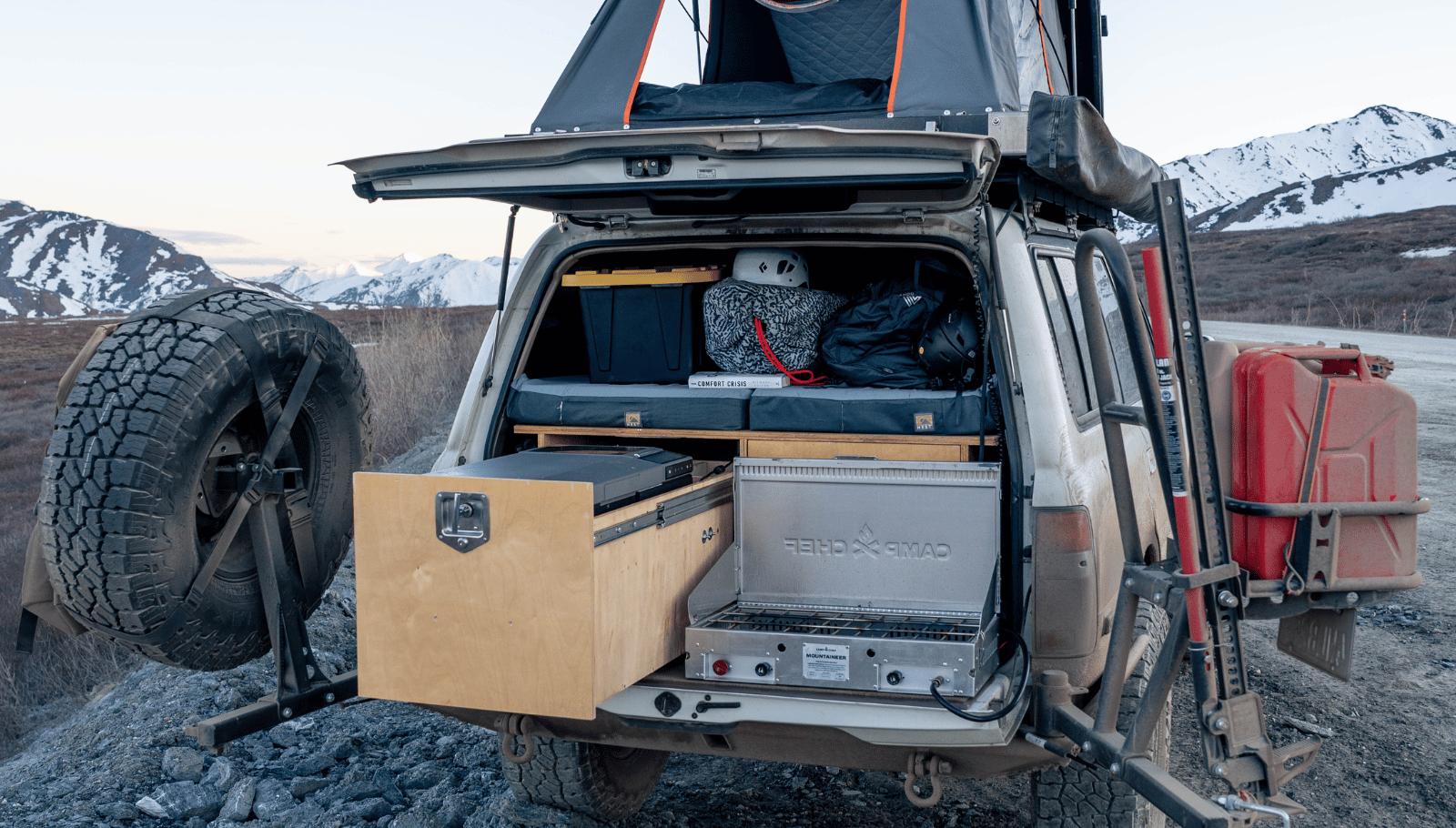Your Cart is Empty
July 01, 2025 6 min read

Welcome to our monthly Rigs We Dig series! Each month in 2025, we'll be celebrating the ingenuity of a featured DIY build—showcasing their smart design, practical functionality, and adventurous spirit.

When Trevor Clark set out to build his dream overland vehicle, comfort and capability weren’t negotiable—they were essential. Forgoing the vanlife route in favor of something far more rugged, Trevor chose a 1997 Lexus LX450 (the luxe twin of the iconic 80 Series Land Cruiser) and built it into a self-sufficient, sleep-ready rig known as The Cruiser. With a full rear platform, dual HEST Foamy mattresses, an Alu-Cab rooftop tent, and just the right mix of minimalism and durability, his rig is built to tackle deep sand, snow, and solitude—anywhere adventure leads. Now parked in Alaska and geared for the long haul, The Cruiser is the definition of “earned comfort.”
Your Name: Trevor Clark
Location: Alaska
Rig Nickname: The Cruiser
Make & Model: Lexus LX450 (80 Series Land Cruiser)
Year: 1997
HEST products: Dually Queen, 2 Foamy Wides, Down Comforter, Fleece Duvet & Camp Pillows
What made you choose the 80 Series Land Cruiser as your base?
Anyone who owns an 80 Series is probably a little biased, but with my lifestyle and itinerary, it felt like the only choice. I didn’t just want something that could get me to remote places—I needed something that could get me back too.
Can you give us a top highlight overview of your buildout and its key features?
It’s anchored by two large sliding drawers—one holds my kitchen setup and fridge, while the other stores gear and a propane tank that hooks up to my stove. On top of the platform, I’ve two Foamy’s latched together, which I use when I’m not sleeping in the rooftop tent—perfect for stormy nights or when stealth camping. In my Rooftop tent I have a Dually Long and HEST bedding.
Power-wise, I run 200 watts of solar into a battery bank, which more than covers all my charging needs.
What were your main goals or priorities when designing and building your rig?
I always say, “If you’re dumb like me, get yourself a foolproof rig that can get you out of all the stupid decisions you make.” Capability and reliability were my top priorities. I spend a lot of time off the beaten path, often driving through deep sand, snow, or questionable terrain to get where I want to go.What were some of the biggest challenges you faced during the build process?
The cost always seems like it’s going to be manageable—until it isn’t. Things pile up fast. One of the biggest lessons I’ve learned is that if you like to explore the way I do, you have to understand the basics of how your rig works. Even though the 80 Series is reliable, it’s still an old truck, and old trucks come with old truck problems.
How many dollar signs on a scale of 1 to 5 is your build (5 being the highest)?
A $$ the last time I checked, but it is probably closer to $$$ now.
What products, brands, or upgrades are you most excited about in your rig?

How much time and effort did the entire process take, and was it worth it?

What’s one feature in your rig that you’ve learned you cannot live without?
Probably my HEST Dually—it’s been an absolute game changer. Getting quality sleep in the backcountry can be tough depending on your setup, but this pad changed that completely for me.
With a history of back injuries and chronic pain, having something that actually supports me through the night has been essential. The Dually helps me wake up with less pain and way better mobility— it’s one of the most important pieces of gear in my whole setup.
Are there any features or upgrades you wish you had added (or done differently)?
For this build, honestly, not much. For what I need—and at the price point—it’s pretty much perfect. If anything, I’ve considered dropping the camping stove and swapping it for an electric skillet, just to save some space and make things a bit more convenient.
But at the end of the day, you never really know if the grass is greener until you take a look. So far, this rig has been exactly what I’ve needed.
Where is the coolest place you have taken your rig?
Probably the start of the Pan-American Highway up in Prudhoe Bay, Alaska. Driving up here at the tail end of this past winter was no small task. It’s surreal to think that after all the time and effort spent building this rig, I was able to take her all the way to The Last Frontier.
It’s something I’m really proud of—and also incredibly thankful for. It definitely took a village to get there, and I’m grateful for everyone who’s helped me along the way.
Do you have any advice for someone just starting their overland rig build?
However much you think you’ll spend—go ahead and double it. It’s totally okay to start small and build up over time. My first “rig,” if you can even call it that, was a 2010 Subaru Forester named Roxy. Each trip and mini-build taught me something new and pushed me closer to the setup I have now.
One of the best things you can do is map out your goals for your rig and lean on a mentor or two. There’s a ton of wisdom in the overlanding community, and most experienced folks remember what it was like to be just starting out—they’re usually more than happy to help.

